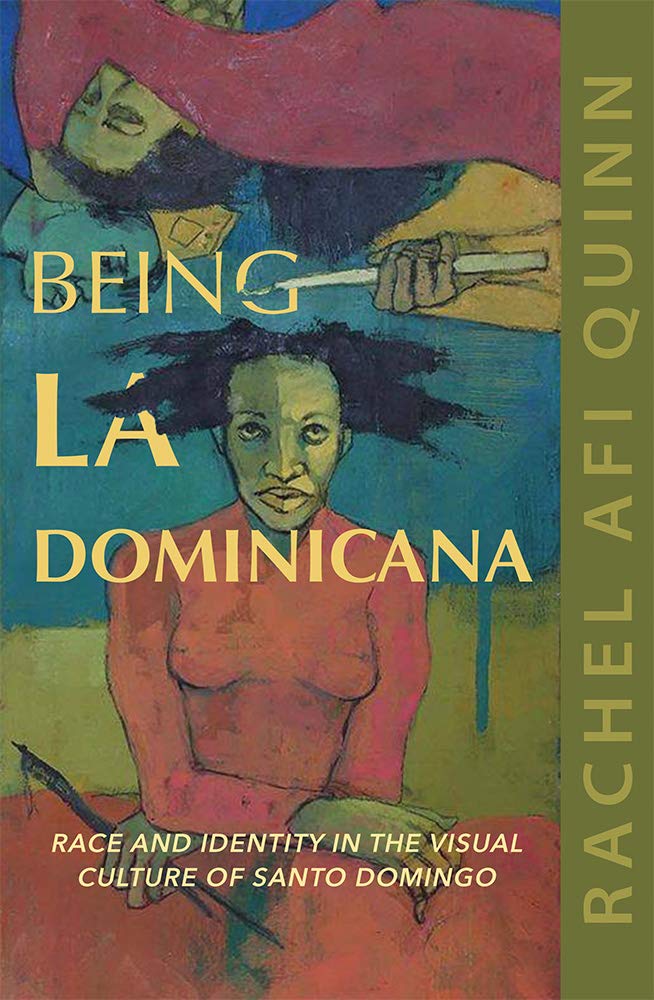

Most ebook files are in PDF format, so you can easily read them using various software such as Foxit Reader or directly on the Google Chrome browser.
Some ebook files are released by publishers in other formats such as .awz, .mobi, .epub, .fb2, etc. You may need to install specific software to read these formats on mobile/PC, such as Calibre.
Please read the tutorial at this link. https://ebooknice.com/page/post?id=faq
We offer FREE conversion to the popular formats you request; however, this may take some time. Therefore, right after payment, please email us, and we will try to provide the service as quickly as possible.
For some exceptional file formats or broken links (if any), please refrain from opening any disputes. Instead, email us first, and we will try to assist within a maximum of 6 hours.
EbookNice Team

Status:
Available4.6
14 reviews
ISBN-10 : 0252085809
ISBN-13 : 9780252085802
Author: Rachel Afi Quinn
Rachel Afi Quinn investigates how visual media portray Dominican women and how women represent themselves in their own creative endeavors in response to existing stereotypes. Delving into the dynamic realities and uniquely racialized gendered experiences of women in Santo Domingo, Quinn reveals the way racial ambiguity and color hierarchy work to shape experiences of identity and subjectivity in the Dominican Republic. She merges analyses of context and interviews with young Dominican women to offer rare insights into a Caribbean society in which the tourist industry and popular media reward, and rely upon, the ability of Dominican women to transform themselves to perform gender, race, and class. Engaging and astute, Being La Dominicana reveals the little-studied world of today's young Dominican women and what their personal stories and transnational experiences can tell us about the larger neoliberal world.
1 Sites of Identity: Facebook, Murals, and Vernacular Images
“Maldito Feisbu”
Raisa and Ingrid: Social Networks as Sites of Identity
Sites of Resistance
Rewriting Master Narratives
Everybody’s Protest Mural
Off the Wall
Photographic Resistance
Paloma: La Calle Será la Calle
2 Me Quedo con la Greña: Dominican Women’s Identities and Ambiguities
Fluctuations in Racial Meaning
To Be Black or Latina?
Marked on the Body
Michelle and Dulcina: Ambiguity and Alienation
“Mi Negra”
Navigating a Transnational World
Michelle: “Negra Caribeña Soy”
3 Whiteness, Transformative Bodies, and the Queer Dominicanidad of Rita Indiana
“La Hora de Volvé”
Ritaindianístico Pastiche
The Privilege of Being a Transformista
Queerness and Whiteness in the Dominican Imaginary
“El juidero” as Masculinity Deployed
Rita Indiana’s Brand
Racial Vacillations and the Epistemic Knowledge of Mixed Race
4 A Thorn in Her Foot: The Discomfort of Racism and the Ethnographic Moment
La Plaza and El Mall
Patricia: Dominican German Feminism
Who Is Afrodominicana?
Yessica y Ambar: Different Razas
5 The Camera Obscura: Teatro Maleducadas’ Production of La Casa de Bernarda Alba
A Looking-Glass World
Other Worlds Are Possible
Seeing Gender, Seeing Race
Whiteness as Metaphor
The Wrath of Bernarda
Seeing and Policing Bodies
6 Feminist Rage and the Right to Life for Women in the Dominican Republic
Fictions of Identity in Trópico de Sangre
Queering Minerva
Color and Its Consequences
Albania and Inez: “Niña No Esposa”
Girlhood Interrupted
#TodosSomosEmely
The Art of Rage
Curiouser and Curiouser
is being dominican an ethnicity
being la dominicana
dominican racial identity
is being dominican a race
dominican identity
Tags: Being, Dominicana, Race, Identity, Visual Culture, Santo Domingo, Rachel Afi Quinn